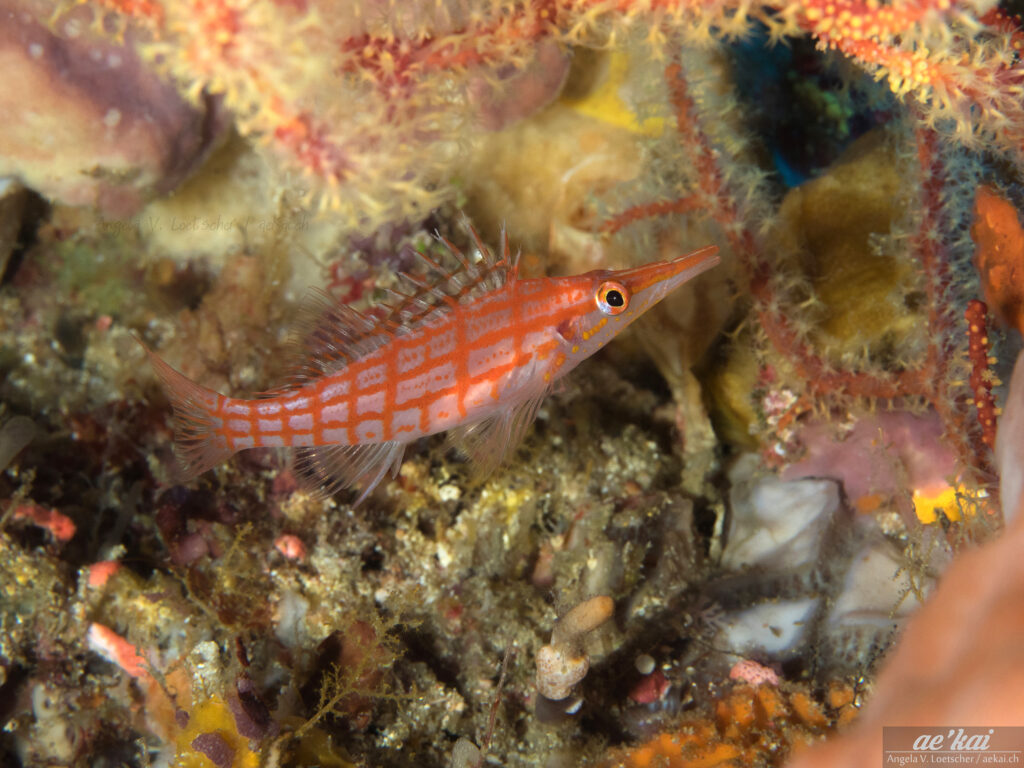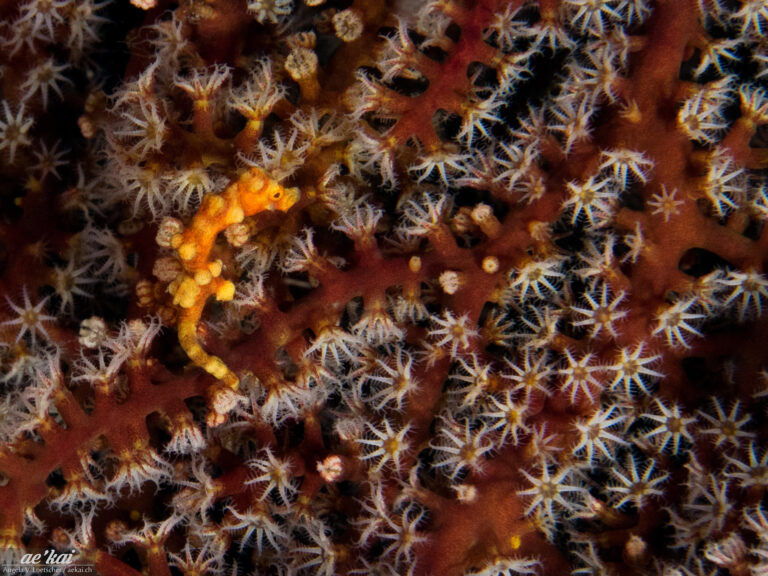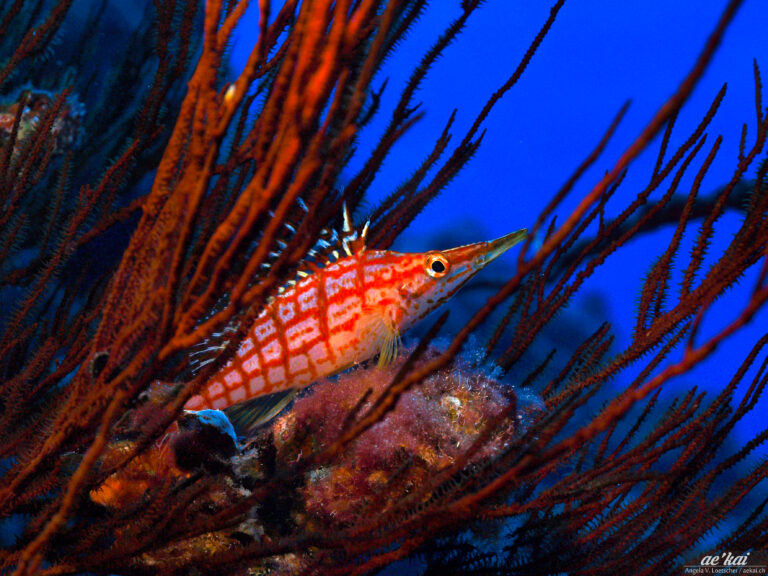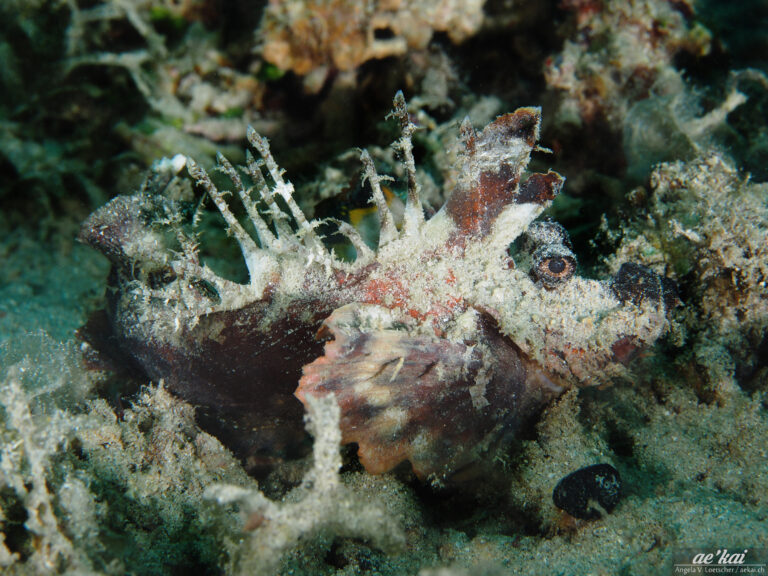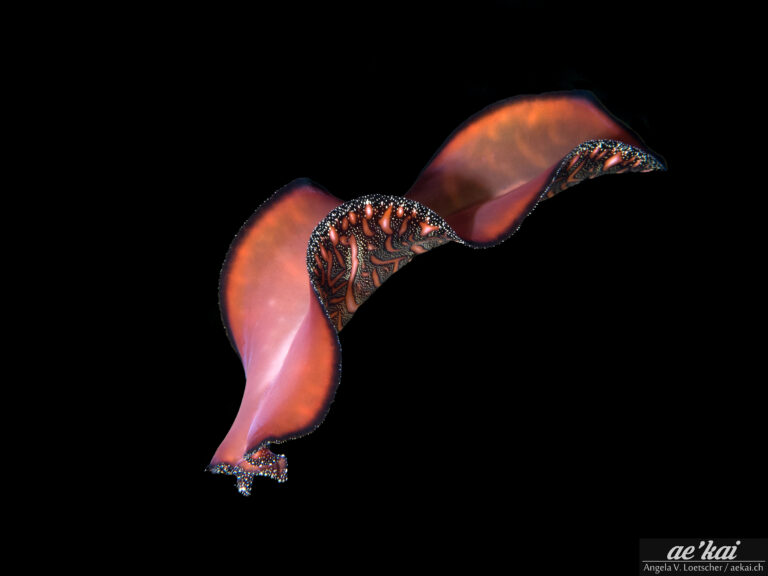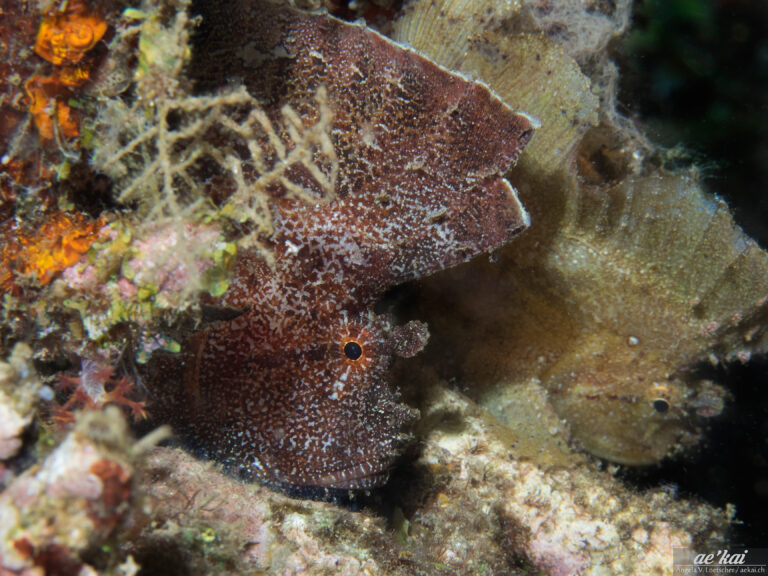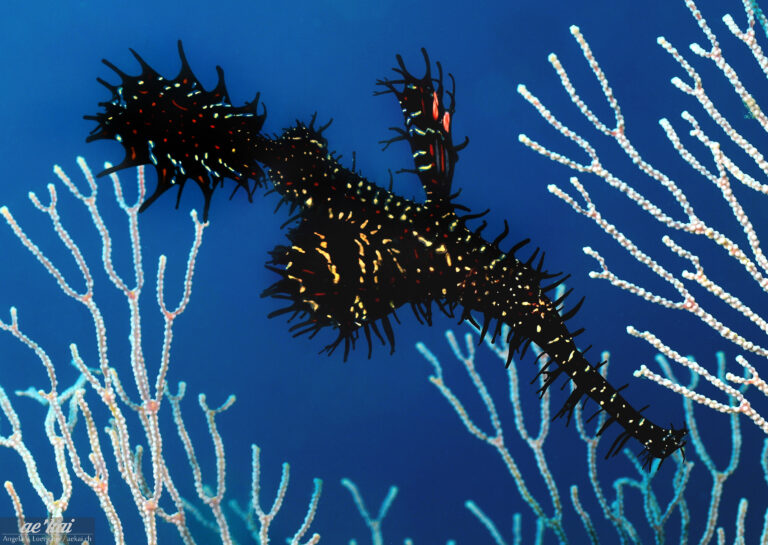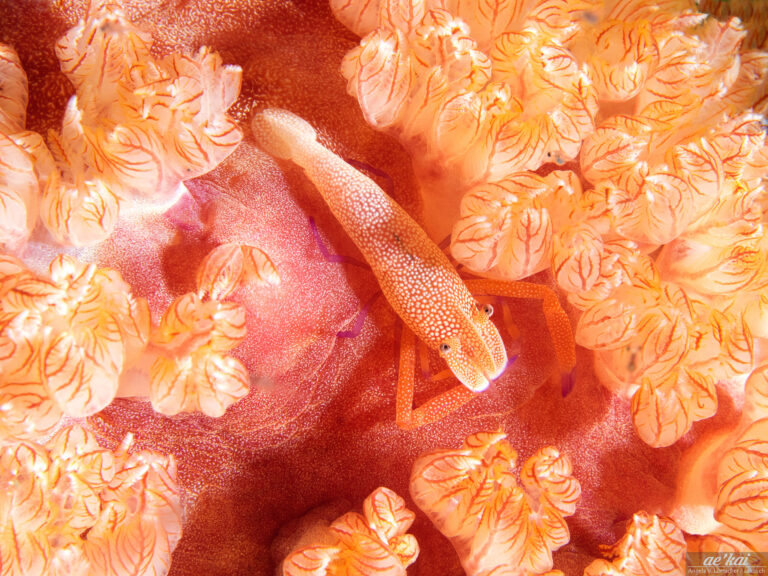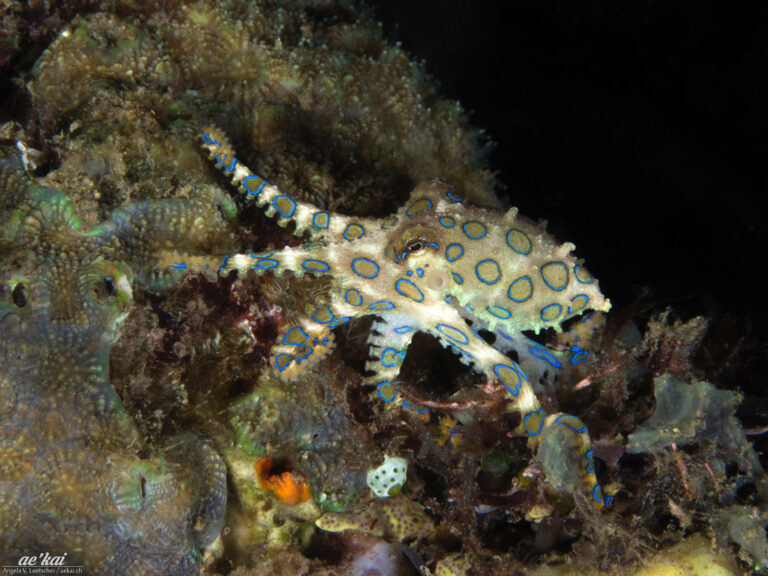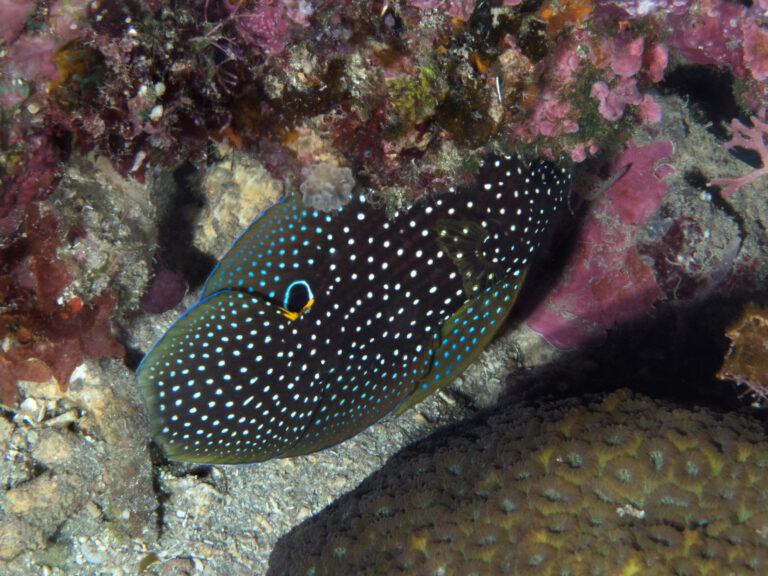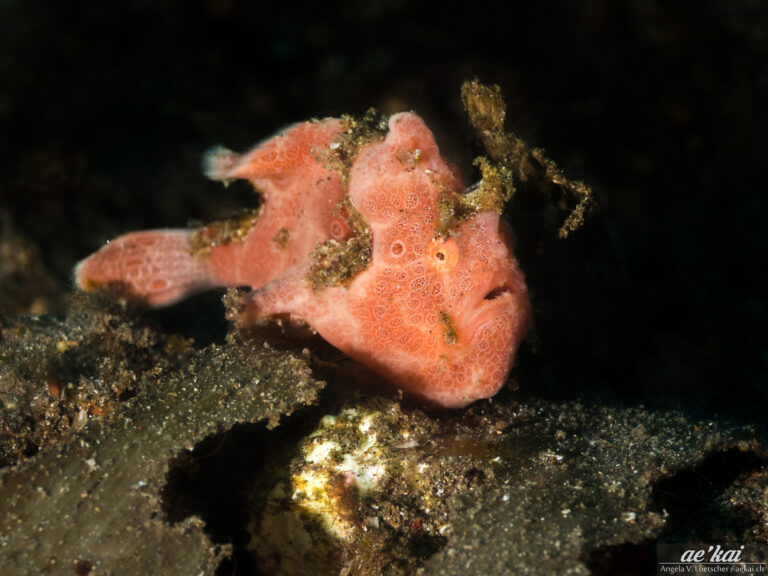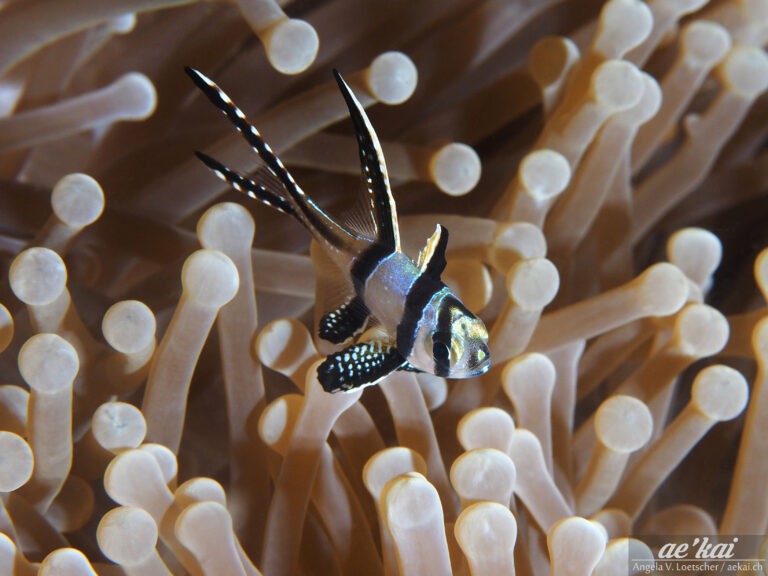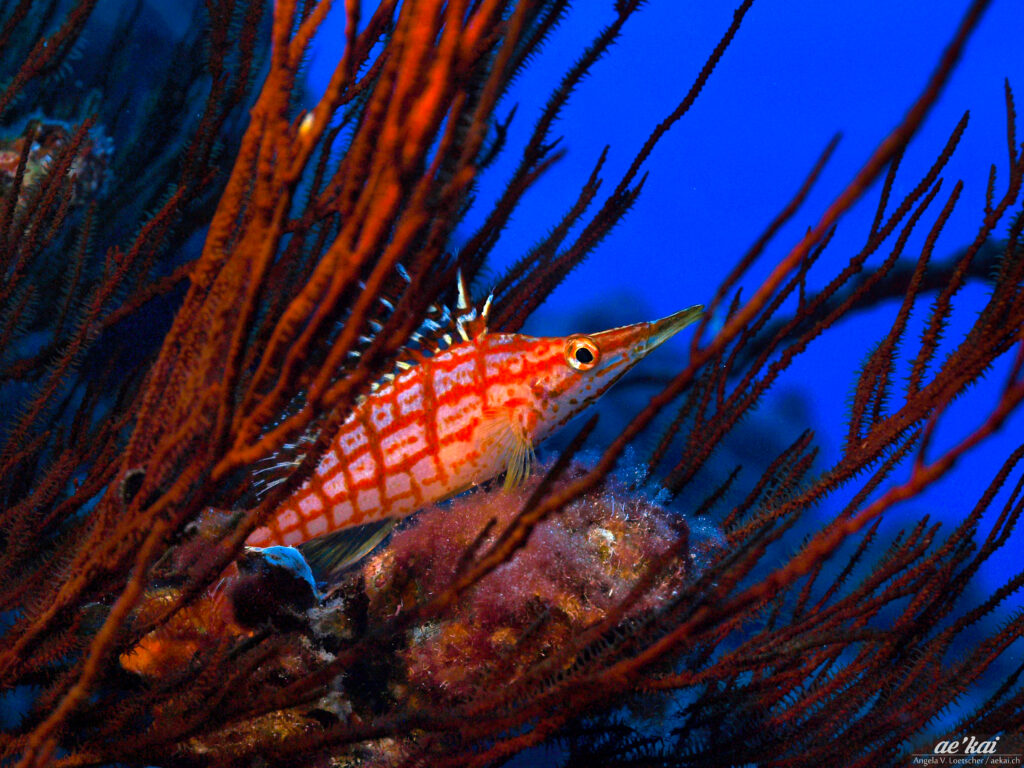
EN: Longnose Hawkfish
DE: Langnasen-Büschelbarsch | Langschnauzen-Korallenwächter | LaNaBüBa
Family
Hawkfish
(Cirrhitidae)
Size
approx. 13 cm
Diet
Small fish
and crustacean
Distribution
Indo-Pacific &
Eastern Pacific
The Longnose Hawkfish belongs to the hawkfish family and is certainly one of the prettiest hawkfish. It is the only representative of its genus and grows to about 13 cm in length. Longnose Hawkfish have an elongated, laterally compressed body and – as the name suggests – an elongated, pincer-like snout. The body is white in color with a checkered red pattern that gives the fish a striking appearance. A small tuft can be seen at the end of each dorsal fin ray.
The male can be distinguished from the female by its slightly reddish jaw, a black fringe on the anal and pectoral fins, and its slightly smaller size. Longnose Hawkfishare hermaphrodites and are always born as females. Later on, some become males, while the rest continue their lives as females.
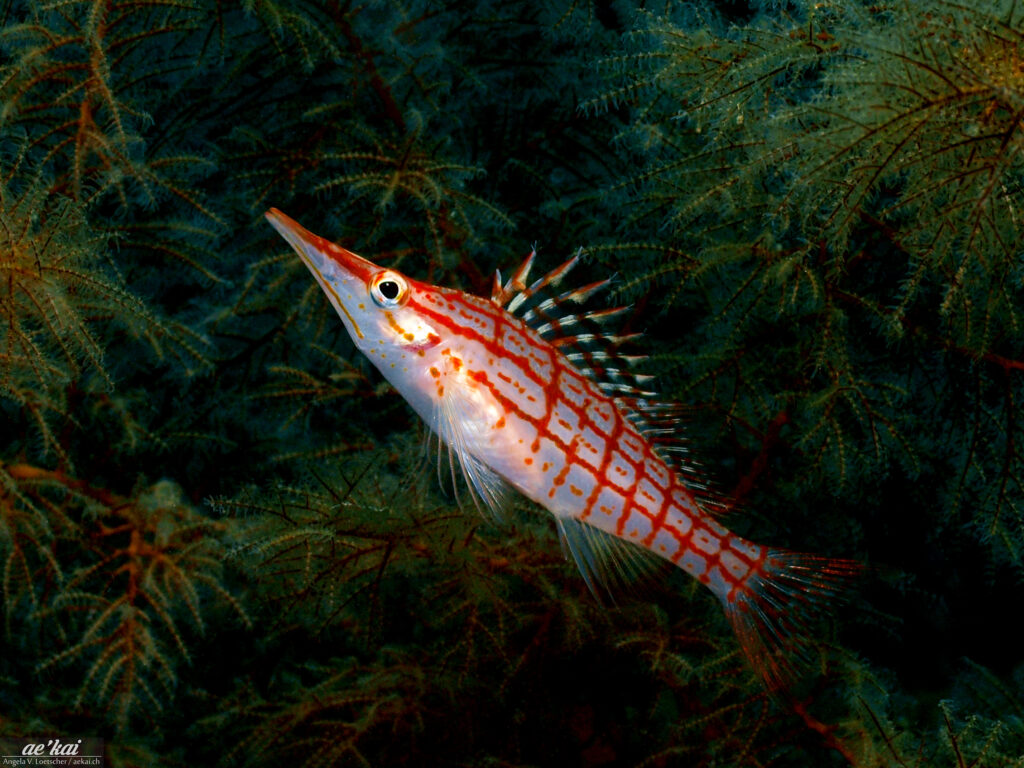
The Longnose Hawkfish lives mainly on black corals or gorgonians, in which it is very well camouflaged with its markings. There it lies in wait for small fish and crustaceans, which it snatches up by darting quickly forward.
It is substrate-bound, which means that its swim bladder has regressed and it is not an enduring swimmer. Therefore it will never be found in open water. It is theoretically found at depths of 10-100 m, although it is almost always found at depths greater than 30 m. Its preferred habitats are black corals on current-rich and usually steep slopes. Its range includes the Indo-Pacific and the Eastern Pacific.
The Longnose Hawkfish is on many UW photographers’ “Holy Grail of Photography” list. It is popular with UW photographers not only because of its pretty appearance, but also because it likes to pose nicely. It is considered to be rare.
Behavior
The Longnose Hawkfish has a mostly quite curious nature and is a voracious fellow, which can also become very territorial at times. It sits, propped up on its pectoral fins, on a coral branch from where it can keep a good eye on its territory and surroundings. This watchdog-like behavior has also given it the name “coral guards” in German. Unlike other Hawkfish, it does not live in small harems, but leads a monogamous relationship.
Reproduction
There seems to be disagreement about the exact reproductive process of the Longnose Hawkfish. The mating ritual begins at dusk, but there are very conflicting observations about how it continues after that. This may be due to confusion of the Longnose Hawkfish with the Dwarf Hawkfish Cirrhitichthys falco (happens shockingly often) or a mixing of information about the reproduction of Hawkfish in general with that of the Longnose Hawkfish.
